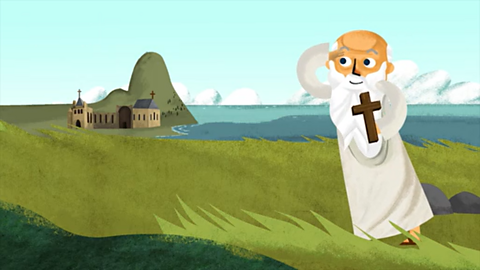What were the Anglo-Saxon Kingdoms?
Anglo-Saxon Britain wasn't ruled by one person and the Anglo-Saxons were not united. They arrived as many differentâŻtribesâŻand each took over different parts of Britain. These were the five most important kingdoms:
| Anglo-Saxon kingdom | Area in Britain | Settlers were called |
|---|---|---|
| Kent | Kent | Jutes |
| Wessex | South West England | West Saxons |
| East Anglia | Norfolk and Suffolk | East Angles |
| Mercia | Midlands | Mercians |
| Northumbria | North of the River Humber | Northumbrians |
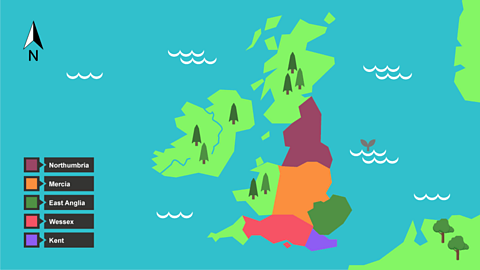
How were these kingdoms ruled?
Each group of Anglo-Saxon settlers had a leader or war-chief.
A strong and successful leader became 'cyning', the Anglo-Saxon word for 'king'.
Each king ruled aâŻkingdomâŻand led a small army.
The Anglo-Saxon kings were from ruling families who passed their power on to their children.
From time to time, the strongest king would claim to be 'bretwalda', which meant ruler of all Britain.
Did they have laws?
The Anglo-Saxons didn't have prisons. People found guilty of crimes were either executed or punished with fines.
If they ran away, they became 'outlaws' (outside the law), and anyone could hunt them down - unless they hid in a church. The fine for breaking into someone's home was five shillings, paid to the home-owner. For minor crimes like stealing, a nose or a hand might be cut off.
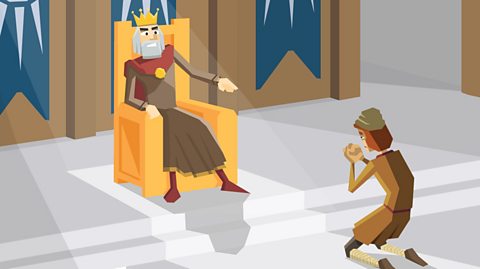
The Saxons had a system called 'weregild', which meant that if you injured someone, you had to pay for the damage!
If a person killed someone, they paid money to the dead person's relatives. The idea was to stop long fights or 'blood feuds' between families by making them pay money instead.
How did the Anglo-Saxons and Vikings split Britain?
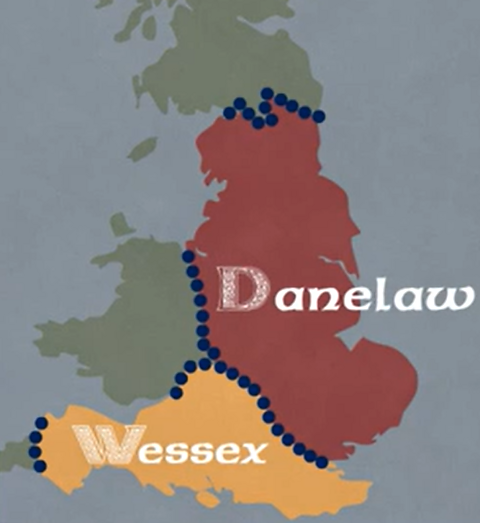
Anglo-Saxon history tells of many Viking raids. The first Viking raid recorded in the Anglo-Saxon Chronicle was around AD787. It was the start of a fierce struggle between the Anglo-Saxons and the Vikings.
Over time the Vikings took control of several Anglo-Saxon kingdoms. Eventually the Anglo-Saxons and Vikings made a peace agreement led by King Alfred the Great who had defeated Viking leader Guthrum in AD878.
The Vikings and Anglo-Saxons divided up Britain with the Anglo-Saxons living mainly in the west and the Vikings in an area to the east, known as the Danelaw.

Who was Aethelflaed?
The Anglo-Saxon word for queen was cwen. Archaeologists have found the graves of many high-status women from early Anglo-Saxon England.
Aethelflaed was a powerful Anglo-Saxon leader. She was the daughter of Alfred the Great who left her money and land. She also married the most powerful noble of Mercia, Ethelred.
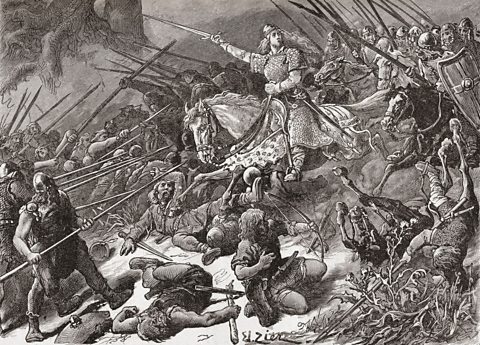
When Ethelred died in 911, Aethelflaed ruled Mercia by herself, rebuilding towns and forts. She was never âqueenâ but had a lot of power. Athelflaed also brought up a boy called Athelstan who eventually became the first King of all England.
Activities
Activity 1: Anglo-Saxon classes
Anglo-Saxons were not all equal. Click on the people at this feast below to find out about the different classes in Anglo-Saxon society.
Activity 2: Offa, King of Mercia
Click on the pictures below to find out how one of the most famous Anglo-Saxon kings was Offa, who was the king of Mercia from AD757 to 796.
Activity 3: Quiz â Life under Anglo-Saxon rule
Bitesize Primary games. gameBitesize Primary games
Play fun and educational primary games in science, maths, English, history, geography, art, computing and modern languages.

More on Anglo-Saxons
Find out more by working through a topic
- count4 of 8
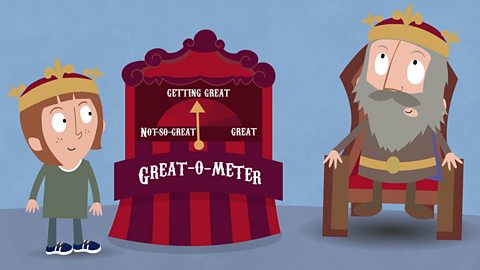
- count5 of 8
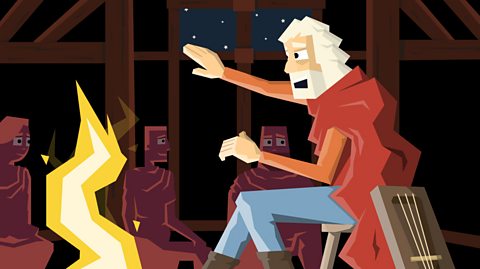
- count6 of 8
